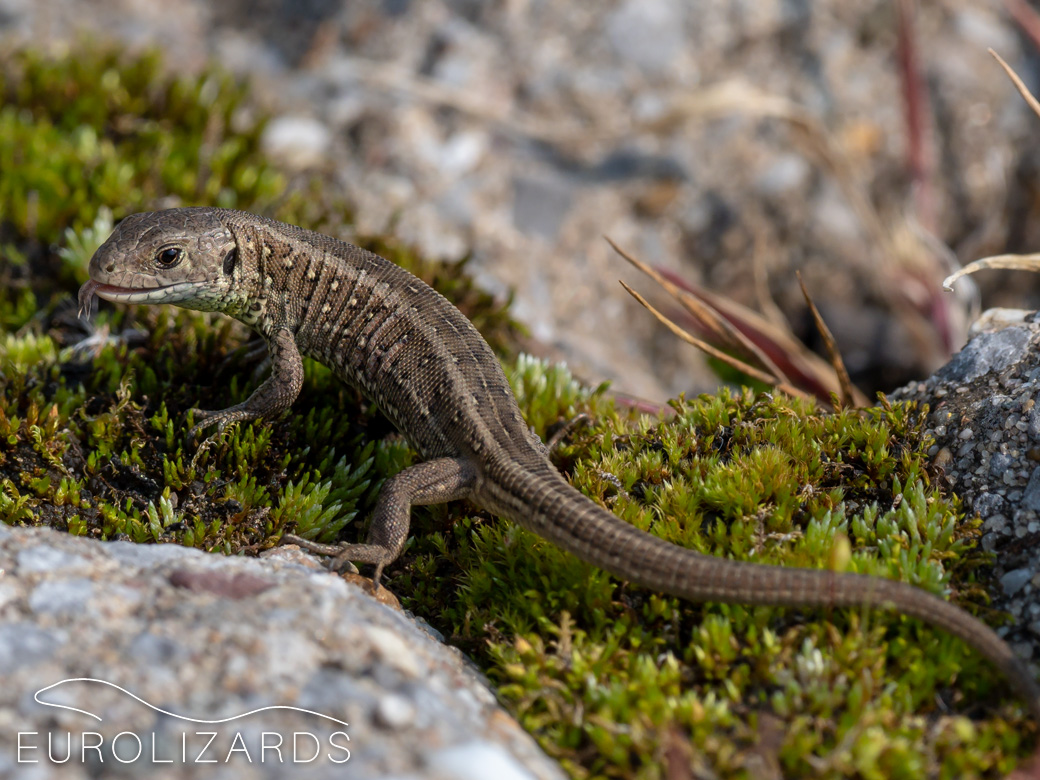Lacerta agilis - Sand Lizard

The genus Lacerta comprises a group of eye-catching green lizards which may even have inspired the fantasy of our ancestors. Hence, it gave its name to the whole Lacertid familiy.
The smallest member of this genus, Lacerta agilis, has been designed for the continental Eurasian area: A ground-dwelling lizard with robust body and short head wich can even cope with Sibirian climate but is quite sensitive to heat.
It inhabits a huge area in temperate Eurasia - from the Pyrenees to China. In south of its range it is restricted to mountain habitats whereas in the north it is rather a lowland species which even occupies coastal dunes (as the common name "Sand Lizard" implies). With its brownish-green colouration it is well camouflaged in the open grassy areas of central-eastern Europe.
In our area, the following subspecies occur:
- The nominate subspecies covers western Central Europe and southern Scandinavia;
- Subspecies argus lives in eastern Central Europe (eastern Germany to Romania);
- Subspecies bosnica occurs in the mountain ranges of the Balkans, to northern Greece in the south;
- Subspecies chersonensis lives In Eastern Europe (Romanian Black Sea coast to eastern Poland);
- Subspecies garzoni is restricted to a small area in the Pyrenees.
Males may be confused with other green lizards (Lacerta bilineata, Lacerta viridis). However, Lacerta agilis is smaller with a compact body. It can also be easily identified by its characteristic back pattern (see pictures). Juveniles of Lacerta agilis show characteristic lateral rows of light ocelli.

Lacerta agilis may co-occur with Podarcis muralis (or other Podarcis species) and Zootoca vivipara from which it can be distinguished by frequently showing a light vertebral line. Eremias arguta at the Romanian Black Sea Coast may look similar to female Lacerta agilis but that latter one has a thicker tale.
In Central Europe, this species is highly threatened by intensive agriculture, clear landscapes without microstructures, "orderly" private gardens and straying domestic cats.












EUROLIZARDS - The Home of European Lizards! © Birgit & Peter Oefinger
